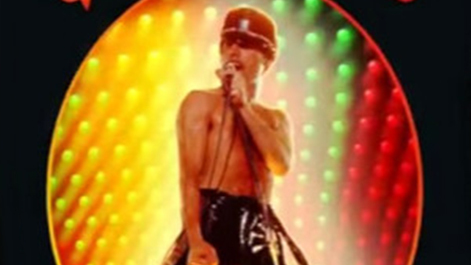Remember the future? Ironically it hit its peak decades before many of us were born. It was an oncoming era so tantalizingly imminent you could almost taste it; a time when we’d all be travelling to work by jet-pack (although rarely, as computers would have left us so rich in leisure time we’d be spending most of our lives at home), playing chess with the robot wife or flicking through our albums of 3-D photographs. Sadly, with all hope of a tolerable future consigned to history, most have reluctantly relinquished dreams of capturing that elusive third dimension for posterity. But not Brian May.
Eversince 1959 when 12-year old Brian sent off one-and-sixpence and a token from a packet of Weetabix to secure a plastic viewer with which to unite two virtually identical side-by-side shots of a gape-mouthed hippopotamaus he’d received free in his packet of wheaty goodness as a single simulated 3-D image, he’s been utterly devoted to the cause.
Queen In 3-D, as well as providing the closest thing to a – completely non-ghost-written – Brian May autobiography we’re ever likely to get, chronicles (with the aid of numerous beautifully restored and reproduced shots from May’s own archive that can be viewed with a specially designed and included OWL stereoscope) the author’s journey from childhood experiments, with his ever-ingenious Red Special designer dad, to the publication of the book itself. A singularly engaging trip that incorporates his entire Queen career along the way.
But is it any good? You’re wondering. How 3-D is it? First of all, yeah, it’s pretty good. May’s observations on Queen are as candid as his shots. He reveals much of the humdrum hurry-up-and-waiting that hid behind the band’s outwardly regal passage from Hoople supports to mega-stadia, though admittedly little in the way of personal revelation.“Brian May is my name, and for the first part of my life it was the name of someone quite small and lacking in confidence, but that’s part of a different discussion,” he begins, tantalizingly.
It is, perhaps surprisingly, very 3-D. Much more 3-D than its relatively understated, lenticular Freddie cover suggests, in fact. Once you’re used to the viewer, there’s a tangible gap between foregound and distance with subjects seeming to visibly lurch toward you. Ultimately, then, mission accomplished.
Still no sign of an accompanying Flash jet-pack, though.

